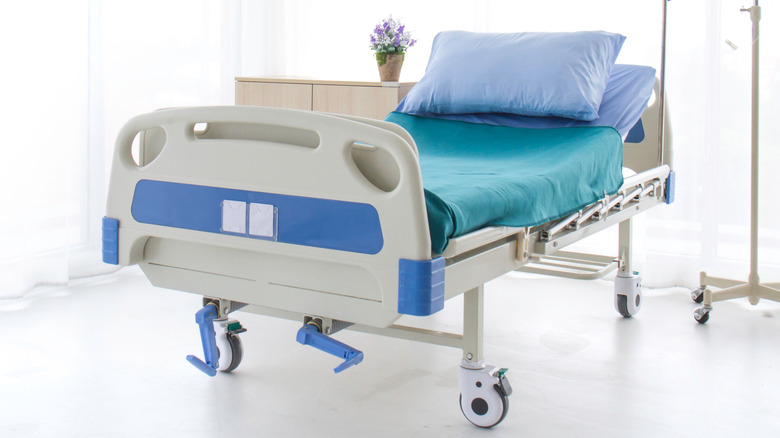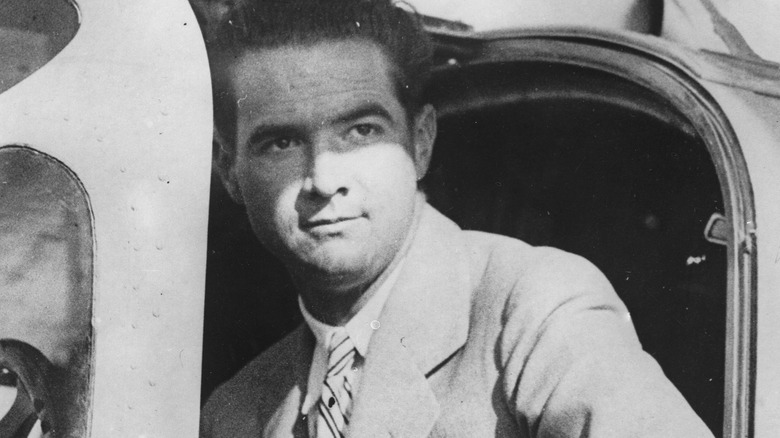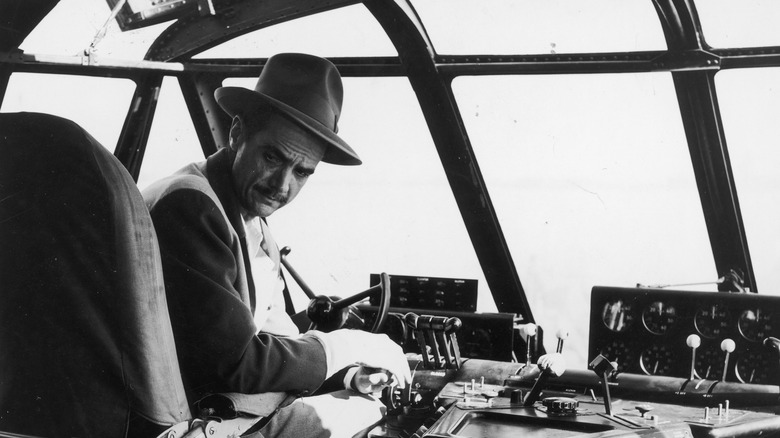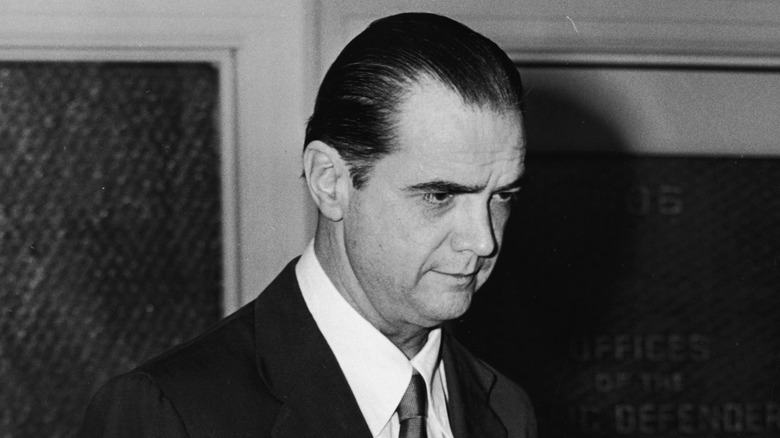Howard Hughes' 1946 Plane Crash Possibly Inspired The Modern Hospital Bed
Howard Hughes is well-known to have had his wildly eccentric fingers in numerous, virtually unrelated industries. His father invented a drill bit that revolutionized oil drilling and generated a massive amount of wealth for the Hughes family. According to Britannica, Howard dropped out of high school to run his father's company. At just 21 years old, Hughes moved out to the then-burgeoning showbiz town of Hollywood and started producing movies. He eventually started directing his passion project, "Hell's Angels," which is about a love triangle between two British pilots and a socialite, set during World War I. The film segued nicely into another one of Hughes' projects; this time, he looked to tackle the aviation industry.
Hughes' aircraft company — which, conveniently enough, was named the Hughes Aircraft Company — was responsible for cranking out some of the fastest planes the world had seen up to that time. What some people may not realize is that from his aviation work, Hughes may have been partially responsible for the modern hospital bed, per The Paper Gown.
Howard Hughes: the test pilot
Much the same way that Hughes opted to take the reins with his films, he did the same with his aviation projects. Hughes studied engineering at both the California Institute of Technology and Rice Institute of Technology, per Britannica. His passion for aviation went beyond building and designing planes; Hughes also liked flying his creations.
Hughes was in the cockpit of an airplane that he designed when he set the landplane speed record, and a few years later, using the same plane, he made a transcontinental flight that had an average speed of 332 miles per hour. Hughes and his company were responsible for several major innovations in aviation, according to Biography, including the first retractable landing gear. The Hughes Aircraft Company had military contracts, but like many of his films, the planes weren't ready in time and came in way over budget.
On July 7, 1947, Hughes was once again in the cockpit of a new aircraft, the Hughes XF-11. According to the Los Angeles Times, on its maiden test flight and with Hughes at the controls, the XF-11 appeared to suffer a problem. Hughes attempted a crash landing on the Los Angeles Country Club's golf course. He came up short of his intended landing spot and crashed into several Beverly Hills houses.
Hughes' high-tech hospital bed
Having served as a test pilot for over a decade at that point, Hughes' 1947 crash was not his first, but it was his most severe by a significant margin. According to The Paper Gown, Hughes had to be rushed to the hospital, where he required several blood transfusions and needed to have his lung drained. While Hughes would've no doubt been happy to be getting the medical treatment he needed, he wasn't very fond of his hospital bed. Given that he was Howard Hughes, and with the potent combination of a team of engineers and deep, deep pockets at his disposable, he asked his team to come up with a better hospital bed for him.
They delivered in a big way. It was reported that the hospital bed was adjustable by way of several electric motors, and featured both hot and cold running water. As Hughes was well-known for his eccentricities already, the bed garnered its fair share of media coverage. It's thought that the residual effect of this attention was that it kickstarted an interest in developing new and better hospital beds.
The crash had a major effect on Hughes
While something good came out of Hughes' horrific crash, it was also an event that changed him completely as a person. Up to that point, Hughes had lived his life very much in the public eye, but following his crash, he began a descent into the severe reclusiveness that he was known for during the final decades of his life. According to The Paper Gown, the incident caused Hughes to develop a drug addiction and he became intensely paranoid.
Hughes' entrepreneurial pursuits continued even as his emotional condition worsened. He bought a large part of RKO Pictures the year after the crash but never visited the studio before he sold his shares in 1953, before buying the whole studio in 1954, then selling it again the next year, per Britannica. Hughes eventually spent most of the 1960s living atop the Desert Inn in Las Vegas, which he is believed to have purchased after being told he needed to leave the penthouse, and buying up land in Las Vegas. All the while, Hughes went out of his way to maintain both privacy and obsessive levels of cleanliness, going so far as to wear tissue boxes for shoes and burning his clothes. Toward the end of his life, Hughes ventured out of Las Vegas and started sporadically moving around the world, according to Biography. Hughes died in 1976 while flying from Mexico to Houston, Texas, where he was to receive medical treatments.



